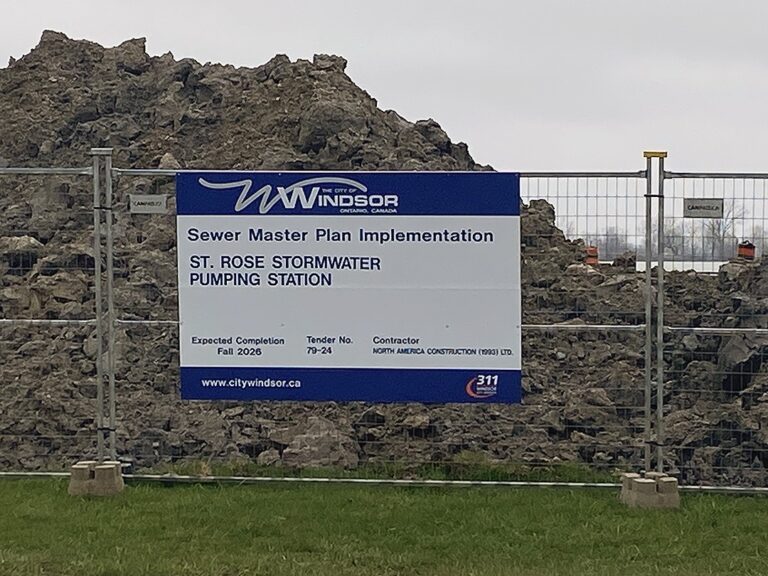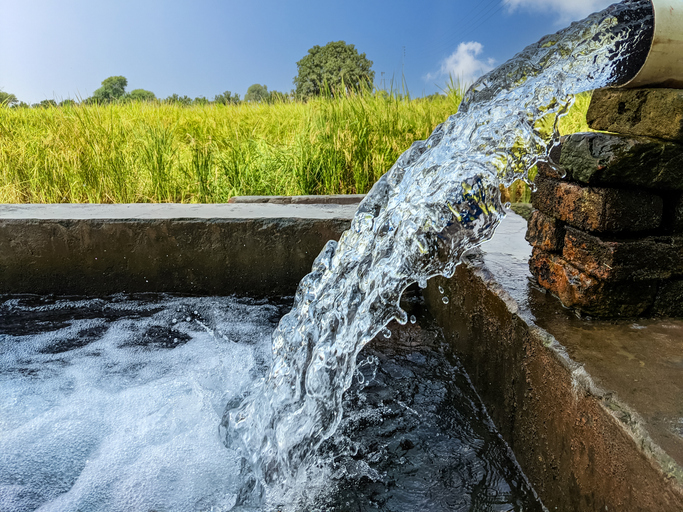The Government of Alberta has issued new guidelines for municipalities, developers, irrigators, and other parties dealing with stormwater and wastewater on their projects and properties.
The Public Health Guidelines for Water Reuse and Stormwater Use set water quality objectives and provide guidance on how to evaluate and mitigate risks to health from using, reusing, reclaiming, and otherwise handling stormwater and wastewater.
Until now, outside of Alberta Building Code, National Plumbing Code and assorted municipal requirements, Alberta has had only minimal regulations or standards directly addressing reclaimed water. While some basic rules have been in place—for instance, disallowing domestic use of reclaimed stormwater and wastewater unless approved by the local municipality—the new guidelines essentially introduce provincial public health criteria and considerations to the discussion.
Debra Mooney, an environmental public health advisor with Alberta Health, says the guidelines are rooted in frequent queries by municipalities, developers, and other stakeholders seeking clarity from three provincial government departments: Health, Municipal Affairs, and Environment and Parks.
“A lot of the questions were around risk assessment and how to protect health, so we formed a working committee, listened to their questions, and incorporated that into our document,” Mooney says.
With considerable involvement from in-house personnel and independent specialists, Alberta Health reviewed available data, characterized factors such as microbial loads in different sources of water and wastewater, and calculated log reductions and other targets needed to set appropriate benchmarks.
The guidelines address microbiological health hazards for five potential sources: municipal wastewater, greywater, stormwater, rooftop collected rainwater, and vehicle wash wastewater. The guidelines then list nine non-potable end uses where human exposure is probable: agri-food and non-agri-food irrigation, clothes washing, vehicle washing, dust control and street sweeping, cooling towers and evaporative condensers, toilet and urinal flushing, ornamental uses such as fountains, and recreational swimming and boating.
The guidelines recommend a water quality management plan approach, including an assessment from source to end use, for water reuse projects that present potential risks to public health. The document then outlines a process for developing a plan that includes performance targets for reducing pathogens as well as ongoing monitoring and verification.
Municipalities, not upper levels of government, are ultimately charged with approving many of these proposals. Mooney is quick to emphasize that the guidelines are indeed such, and not provincially legislated rules or standards. “It’s up to the municipalities to decide to what extent they want to use it.”
Smaller municipalities might choose to adopt the guidelines in their entirety, whereas larger municipalities might have sufficient staff and resources to perhaps use the guidelines as a reference in devising their own policies and standards. “It really depends on the capacity of each municipality,” Mooney explains. “Development officers bring their expertise but often have no health expertise, so they turn to Alberta Health Services for comment. We’re just providing guidance around health risk assessment.”
The guidelines also recognize that factors such as stormwater systems and site conditions can vary considerably from one community or even one neighbourhood to another. Mooney says that’s why it’s key to first assess and characterize the water and then design monitoring and treatment systems appropriate to a site’s proposed end use and related factors.
Measures might involve irrigating in ways that offer protections such as watering at off hours to reduce risks, and Mooney says the guidelines can help proponents address any potential challenges at the earliest possible stages of their projects.
Clint Goodman, corporate environment specialist with the City of Airdrie, located in the Calgary Metropolitan region, says the guidelines are a step in the right direction. Lacking direct access to sources of drinking water, Airdrie relies on potable supplies transported from Calgary, so there’s a strong incentive for water management and conservation. “The South Saskatchewan River Basin is closed to new water licenses,” Goodman explains. “So reusing and conserving water are critical in a growing region like Metro Calgary.”
Goodman, who represents Airdrie on the Nose Creek Watershed Partnership, says his community has several stormwater management ponds with recirculating systems and fountains and he anticipates developer demand for reuse systems in order to meet stormwater volume control targets. “We have a vested interest in protecting the watershed, considering the fast paced development, so stormwater use guidelines provide an actual level of direction and support some of the end objectives for protecting watershed health and the creek itself.”
Ultimately, Goodman says he would like to see the guidelines evolve into a provincial standard similar to the sanitary or potable water standards. “It could be one step towards a standard, but that ultimately depends on the direction of the province.”
Alberta’s water sector also has its eyes on the new guidelines. Tige Procyshyn of Landscape Irrigation Solutions, says industry stakeholders such as his company have long anticipated the guidelines. “We have been designing these pump systems for over a decade with limited or interim/draft guidelines and regulations.”
Still, as he absorbs the details, Procyshyn says he has numerous technical questions about details such as risk categories for various applications, the timing and logistics of irrigation, and water quality testing for faecal markers.
“The guidelines seem to be quite nonchalant about the possibility of up to 10 per cent of stormwater being raw human sewage,” Procyshyn says. “We’re struggling with (that) content classification.”
At Alberta Health, Debra Mooney acknowledges a cautious approach to the guidelines, which state that studies have found stormwater contaminated by raw human sewage at levels up to 10 percent. “Even in some of the newer areas, there can be contamination from sewage lines,” Mooney says, noting that stormwater and wastewater sources might appear to be relatively clean yet be affected unintentionally by leakage, cross connections, and even human error.
Still, Mooney says Alberta Health is anticipating and looking forward to feedback and questions. “It would be helpful to hear from [people] directly,” Mooney says. “This work is ongoing and the guidelines will be revisited as new information and research is available.”
This article was written by Saul Chernos, a freelance journalist specializing in environmental issues, for the September/October issue of Water Canada.









